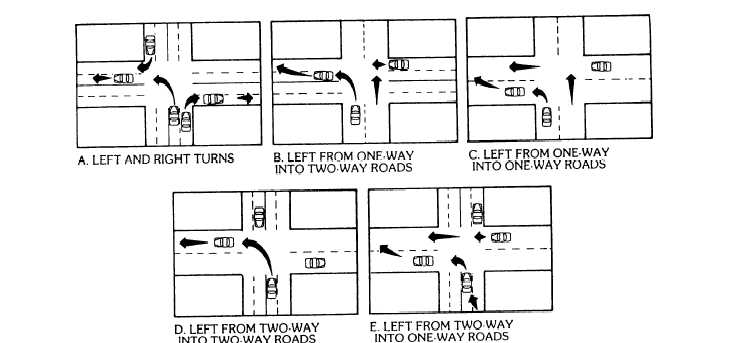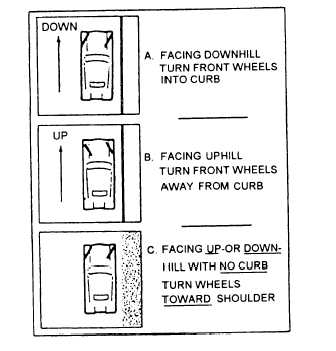Figure 5-2.—Proper turning.
PARKING
When parking in the parking lane on a street, you
should move as faraway from traffic as possible. Where
there is a curb, pull close to it; you must not park more
than 1 foot away. Always park on the right side of the
roadway, unless it is a one-way street.
Make sure your vehicle cannot roll. Set the parking
brake, and shift to park with an automatic transmission
or reverse with a manual transmission. Turn the front
wheels to keep your vehicle from rolling into the street.
(See fig. 5-3.) Before you exit your vehicle, look over
your shoulder to the rear to make sure the way is clear.
BACKING UP
Backing into other vehicles, objects, power lines, or
people is considered negligence on the part of the
operator. To avoid backing mishaps, you should use the
common practices that are used in the NCF. These
practices are as follows:
1.
2.
Blow the horn at least twice before reversing the
vehicle. This alerts personnel in the surrounding
area that a vehicle is preparing to backup.
Exit the vehicle and survey the area for items
you cannot see from the cab of a truck or
equipment before backing in an unfamiliar area.
Check the following: low power lines, fire
3.
hydrants, warning poles, guy wires, parked
vehicles, and other obstacles.
Use a backup guide (signal person). The backup
guide signals you from the rear of your vehicle
as you perform your backing operations. Survey
the area and communicate with the backup guide
so you both have an understanding of the
backing operation.
Figure 5-3.—Positioning the wheels of a parked vehicle.
5-3




